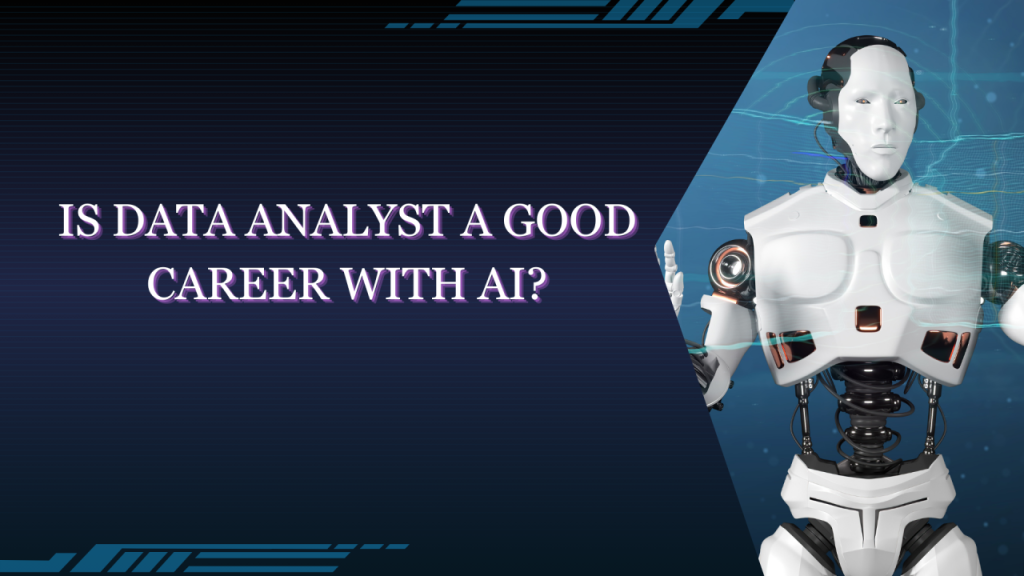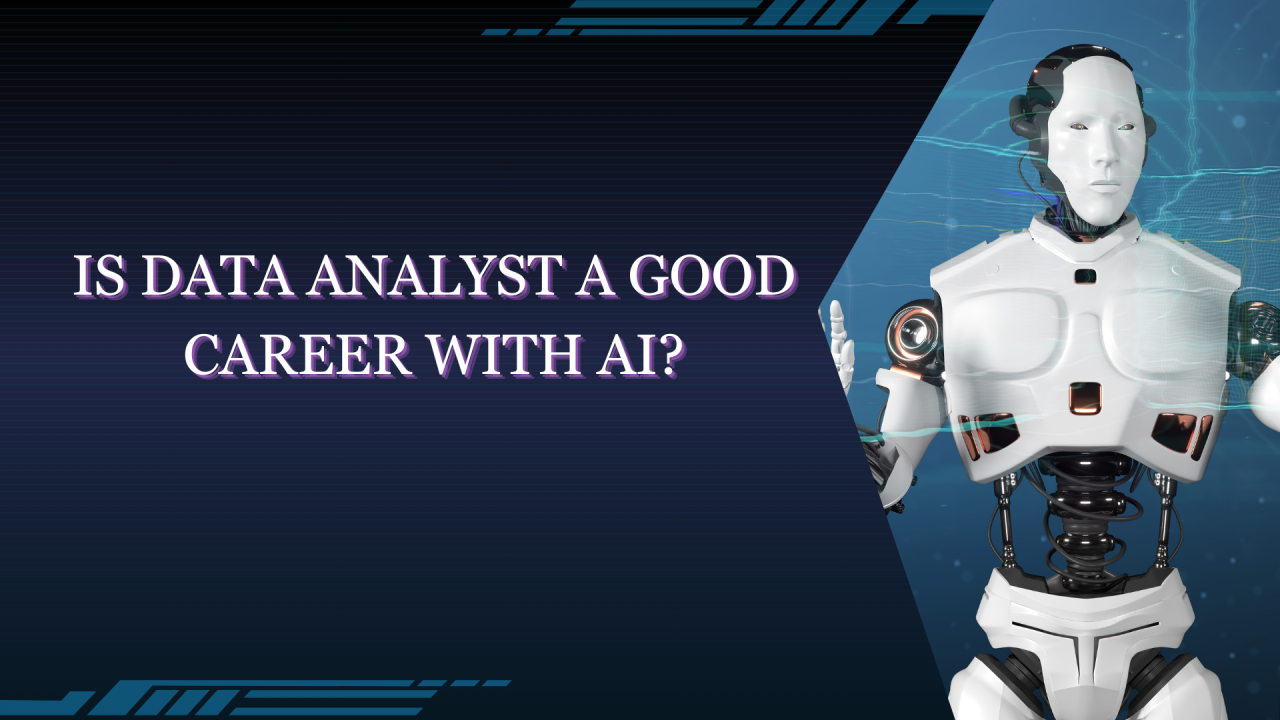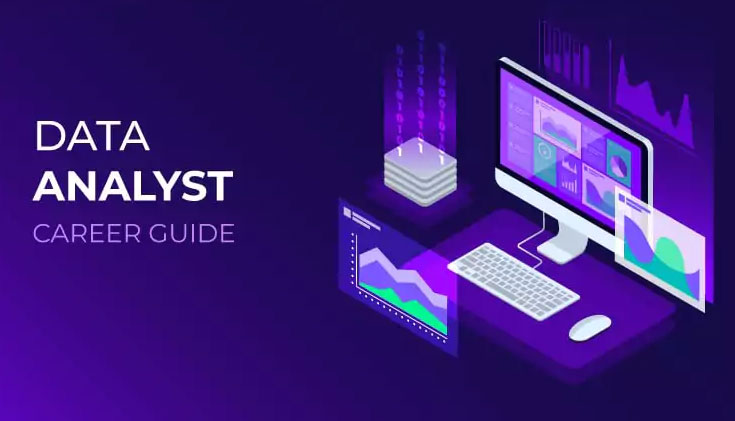With artificial intelligence (AI) becoming a part of nearly every industry, many students and professionals are left wondering: Will AI replace data analysts?
The short answer is: No. In fact, data analysis continues to be a valuable and evolving career path, and the demand for skilled analysts is only growing.
Understanding the Role of a Data Analyst
A data analyst plays a key role in helping organizations make data-driven decisions. They gather data from multiple sources, clean and process it, analyze trends, and present actionable insights that support business goals.
Analysts also build dashboards and create interactive reports using tools like Excel, SQL, Python, and Power BI. These insights help teams understand patterns, measure performance, and identify areas for improvement. As organizations collect more data than ever, the ability to interpret and visualize that data remains in high demand.

The Surge of AI: Threat or Opportunity?
Yes, AI is advancing quickly. It’s changing the way data is handled — automating data collection, cleaning, and even some types of reporting. Tools powered by AI can generate insights faster than ever before.
But this is not a threat — it’s an opportunity. AI can assist analysts by reducing repetitive tasks and allowing them to focus on strategic work. Analysts who adopt AI tools gain a competitive edge and boost productivity.
Instead of fearing AI, embrace it. Learn how to use it to your advantage.
Why Human Oversight Still Matters?
AI models are only as good as the data they are trained on. When data is messy, incomplete, or biased, AI can produce misleading results. This is where human oversight is critical.
A data analyst understands the business context, evaluates whether the data makes sense, and catches anomalies that machines might miss. Human judgment is essential to ensure accurate, ethical, and relevant analysis.
The Evolving Role of Data Analysts
Data analysts today are more than just number crunchers. They are problem-solvers, storytellers, and business consultants. They help bridge the gap between technical teams and decision-makers by translating raw data into understandable insights.
With evolving job responsibilities, analysts now participate in strategy discussions, forecast future trends, and support digital transformation efforts. Their role is expanding — not shrinking.
Real-World Demand: Stronger Than Ever
Despite the rise of AI, demand for skilled data analysts continues to grow across industries. Visit platforms like LinkedIn, Glassdoor, or Naukri, and you’ll find thousands of open roles for analysts in sectors like finance, healthcare, retail, and technology.
According to the U.S. Bureau of Labor Statistics, jobs for data analysts are expected to grow faster than average through 2032. This shows that businesses still heavily rely on professionals who can extract meaning from data.
How AI Supports – Not Replaces – Analysts
AI is a powerful assistant to data analysts. In banking, it helps flag suspicious transactions, but analysts are needed to validate fraud and interpret risk models. In healthcare, AI supports early disease detection, but doctors and analysts must interpret and act on those findings.
AI enhances accuracy and speed but still requires human expertise to make the final call. In short, AI is a tool, not a replacement.
Soft Skills Remain Essential
AI might excel at calculations, but it lacks emotional intelligence and communication skills. Data analysts, on the other hand, must explain complex insights to non-technical stakeholders.
Clear communication, critical thinking, problem-solving, and storytelling are essential soft skills that machines cannot replicate. These are often the deciding factors in how insights are received and acted upon by leadership teams.
AI Is Creating New Opportunities in Data
Rather than eliminating jobs, AI is creating new roles in the data space. These include:
- AI Data Analyst: Analysts who use AI tools for faster insights.
- Data Ethics Specialist: Ensuring responsible use of data and algorithms.
- Model Validator: Auditing AI models for fairness and accuracy.
- Data Quality Analyst: Ensuring clean and reliable data for model training.
These roles are reshaping the job landscape and opening up new career paths for aspiring data professionals.
Learning AI as a Data Analyst: A Smart Investment
Adding AI to your skill set as a data analyst is not just smart — it’s essential. Tools like Scikit-learn, AutoML, ChatGPT, Microsoft Fabric, and Tableau’s AI-powered features help analysts automate routine tasks and generate faster, more accurate results.
Understanding AI concepts, such as machine learning models and predictive analytics, allows you to stay relevant and add more value to your team.
Overcoming Challenges in a Rapidly Changing Field
Yes, the data field is becoming more competitive. Automation is increasing, and new tools are constantly emerging. But that’s not a reason to worry — it’s a reason to adapt.
To succeed, data analysts must:
- Stay updated with tools and trends.
- Maintain a growth mindset.
- Practice communication and storytelling regularly.
- Learn AI tools and integrate them into their workflows.
Adaptability and continuous learning are the keys to long-term success.
Final Thoughts: A Career with Bright Prospects
Data analytics is still one of the most promising career options in today’s digital economy. Every organization needs professionals who can interpret data and support smarter decisions. The combination of data analytics with AI skills is especially powerful.
If you’re serious about starting a career in data analysis, consider enrolling in a structured learning program. For example, Console Flare offers interactive online courses where you’ll learn from industry experts, work on real datasets, and solve real-world problems. Their strong placement support can help you land a high-paying job in the data industry.
For more such content and regular updates, follow us on Facebook, Instagram, LinkedIn





